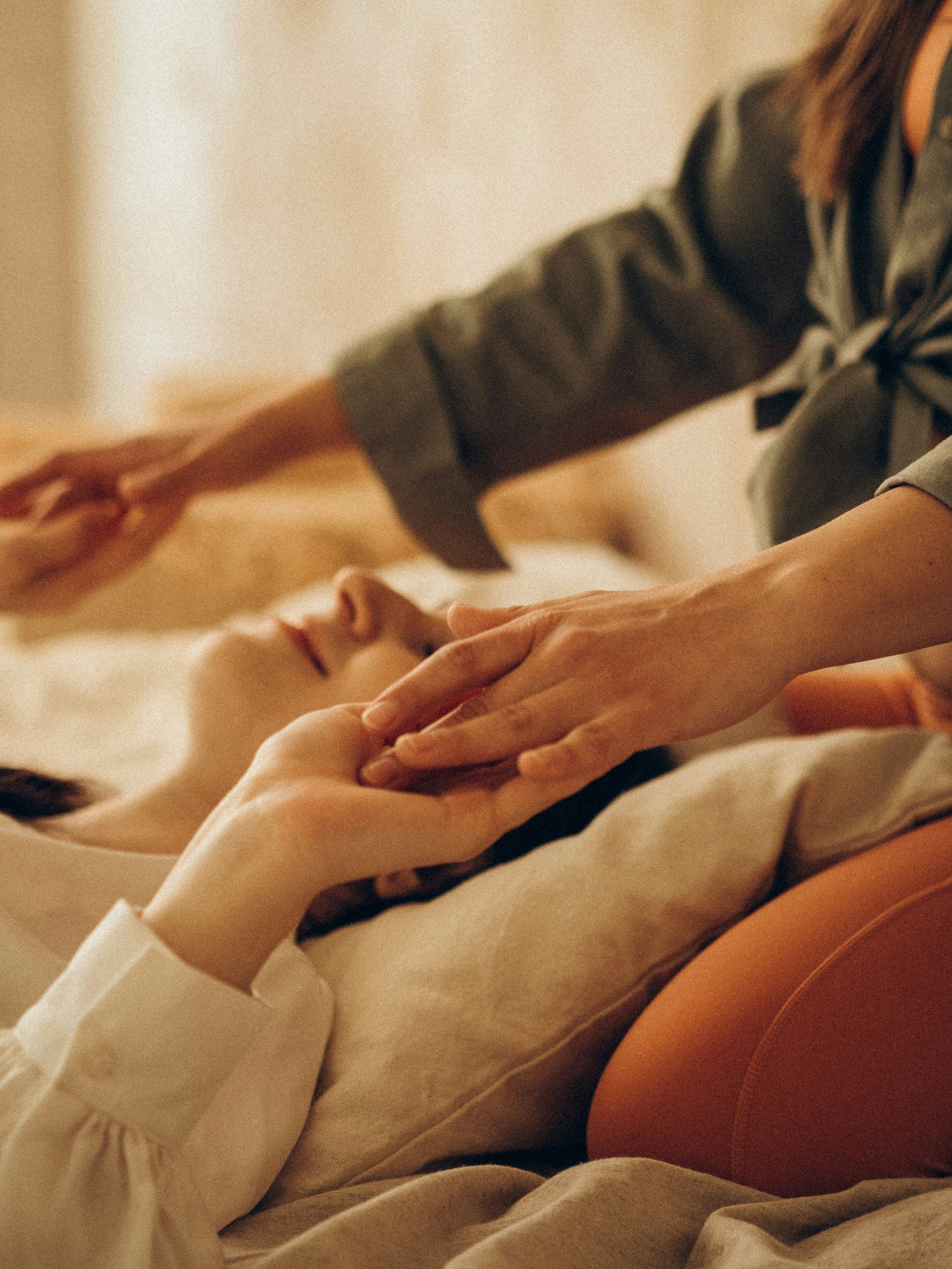The Vagina, Sex & Orgasm: Why Pleasure Supports Pelvic Floor Health, Mood, Blood Flow — and Healthy Ageing
Two pleasure seekers
The Vagina, Sex & Orgasm: Why Pleasure Can Support Pelvic Floor Health, Mood, Blood Flow — and Healthy Ageing
The short version
Sex and orgasm can:
Trigger reflex pelvic floor contractions that improve coordination and awareness (not a cure, but a valuable ally).
Boost mood through oxytocin, dopamine and endorphins, linked with lower odds of depression.
Increase genital blood flow and lubrication, keeping tissues nourished.
Support vaginal comfort and elasticity after menopause alongside moisturisers, lubricants, and (where needed) local oestrogen.
How orgasm works (and why your pelvic floor cares)
During arousal, dopamine, oxytocin and endorphins flood the system these are the brain’s natural feel really good chemistry signals.
At the same time, blood flow to the genitals increases, producing warmth and fullness.
Orgasm adds rhythmic pelvic floor contractions that are reflexive rather than forced and it is these that help the body re-learn coordinated lift and release.
Pelvic floor, prolapse & sex
Regular sexual activity and orgasm reinforce body-awareness through those reflexive contractions, pairing beautifully with breath-led and other rehabilitation strategies, (that may not be quite as much fun!).
Prolapse can most certainly change comfort and confidence levels, yet pleasure is definately still possible. The key is pressure management try using lubrication, different positions and take your time to feel really aroused before penetration, to protect tissues.
You can read more about working with tension in your pelvic floor here
Pleasure, Prolapse & the Truth About “Six Orgasms a Day”
The viral claim that someone healed her prolapse through six orgasms a day has no clinical evidence behind it. I checked, someone told me about this a couple of weeks ago so I have scoured the internet but I couldn’t find a single thing about this. I was, I can tell you, a bit disappointed because wouldn’t that be amazing!!
Research does confirm that orgasm improves blood flow, oxygenation, and pelvic floor reflexes , which does support recovery but don’t replace rehabilitation.
Real healing involves posture, breath, fascial release, and nervous-system regulation. Pleasure can absolutely sit inside that plan, not as a fix, but as a way to bring warmth, awareness and confidence back to the pelvis. And this in of itself can help with our healing mindset and encourage better healing within the tissues.
Does it matter how you reach orgasm?
Not really it’s a fact that the body responds to arousal and orgasm in similar ways whether it’s:
with a partner,
with a vibrator, or
through self-touch.
For women with pain conditions such as vulvodynia, vaginismus or post-surgical tenderness, penetration may worsen irritation at the start of this journey. If this is your world just now then you can still get the benefits with:
External stimulation still releases oxytocin and endorphins and activates the pelvic floor reflexively.
Arousal alone increases blood flow and lubrication, keeping tissues healthy. You can do this through all sorts of ways my friend Tabitha Rayne - writes some great erotic novels - click here for an example or just go there with your imagination.
Self-stimulation can offer a sense of control and safety, supporting nervous-system calm.
“Do Somatic Exercises Really Release Trauma?”
Orgasm vs Penetration — What Makes the Difference?
Orgasm offers:
Rhythmic pelvic floor contractions for better pelvic floor coordination.
A neurochemical lift that reduces stress and boosts mood.
Enhanced circulation to pelvic and vaginal tissues.
Penetration offers:
Stretch and friction this is helpful only when tissues are healthy and pain-free.
Possible pressure on prolapsed or sensitive areas.
For most women, orgasm and arousal, not penetration, bring the biggest physiological benefits. That’s a whole different story…
Sex, Mood & Depression
Large studies show women who have sex about once or twice a week report lower odds of depression.
That doesn’t mean frequency equals happiness however, but oxytocin and endorphins clearly play a part in stress relief and pain modulation.
“Breath, the Amygdala & Healthy Brain Ageing”
Blood Flow, Lubrication & Ageing Well
Arousal itself increases circulation, supporting lubrication and oxygenation.
After menopause, falling oestrogen can cause Genitourinary Syndrome of Menopause (GSM) which is dryness, irritation and pain.
Regular arousal or gentle stimulation keeps tissues supplied with blood and helps maintain elasticity.
Pair this with moisturisers, lubricants and, when appropriate, local oestrogen prescribed by your GP.
Safety, Consent & Comfort First
Pain, burning or bleeding are signals to pause and get checked.
Use lubricants that suit your body’s pH; add moisturisers 2–3 times per week.
Adjust positions and breathing for prolapse or tenderness.
Gentle Ways to (Re)introduce Pleasure
Arousal first, then effort. Warm up gradually; feel the breath move through the pelvis.
Lube as standard. Body-similar products protect tissue and enhance sensation.
Breathe with it. Notice the pelvic floor yield during inhale and the reflexive lift around orgasm.
After menopause: pair regular moisturiser use with lube and, if needed, local oestrogen before resuming penetration.
The Bottom Line
Pleasure is not indulgent it’s part of pelvic health.
Orgasm and arousal improve blood flow, coordination and mood, helping the body feel alive again.
Whether solo or shared, with or without penetration, this is about re-connecting with sensation and trust in your body.
Next Steps — Explore Your Own Reconnection
Try my free Mini Hypopressives Course at hypopressivescotland.com/resources — use code FREEBIE at checkout.
Or, if you’d like tailored guidance, book a 1-to-1 session to explore breath-led pelvic-floor recovery.
